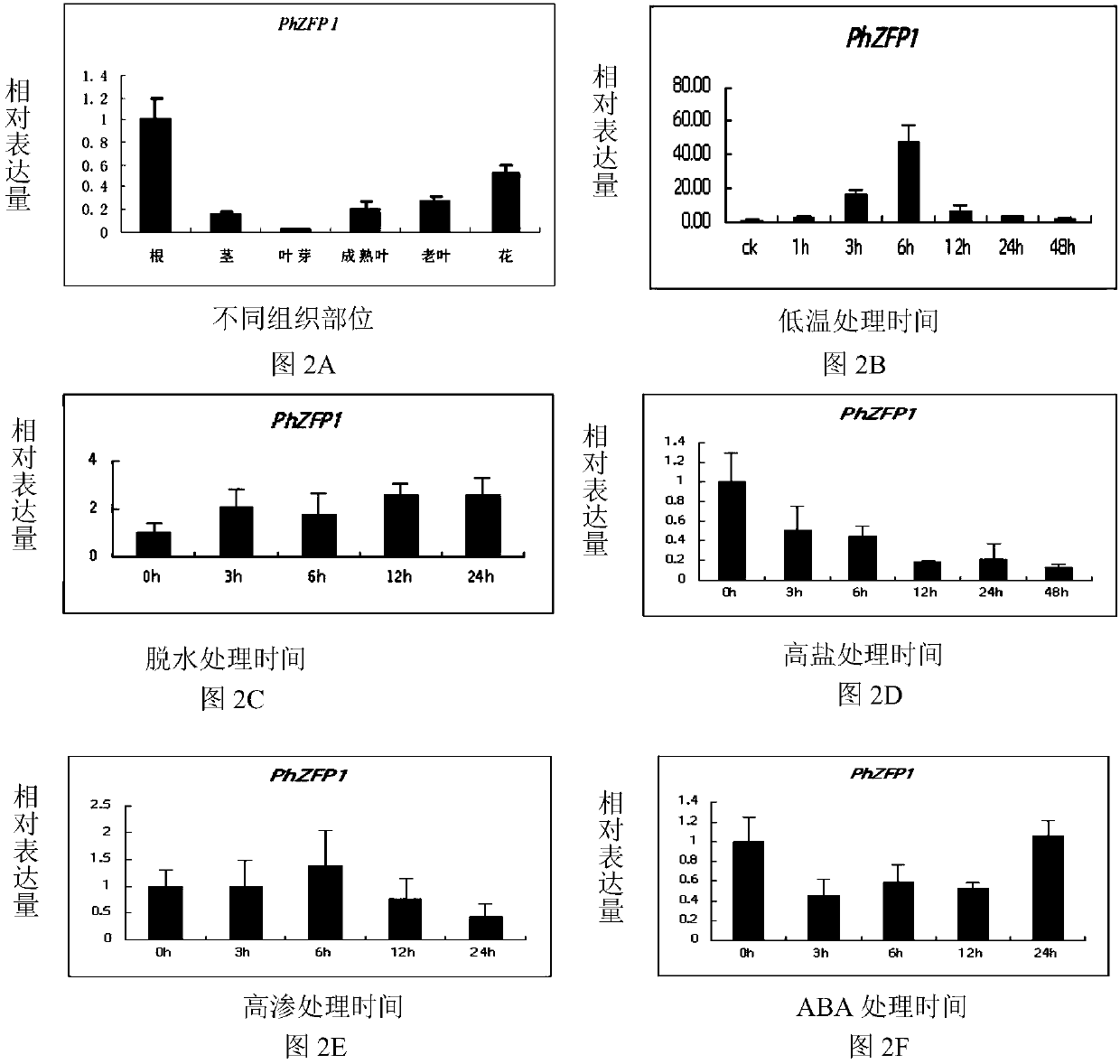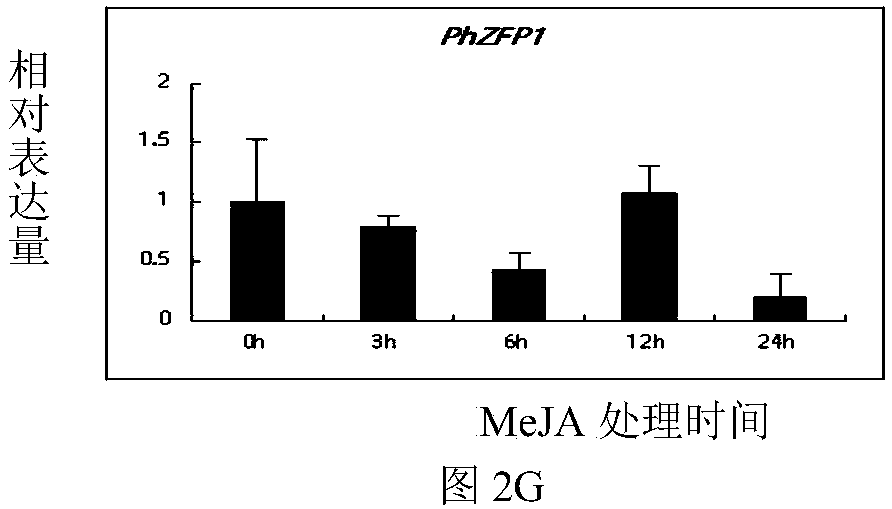Zinc finger protein gene PhZFP1 of petunia hybrida and application of zinc finger protein gene PhZFP1 in improving cold resistance performance of plants
A petunia, cold resistance technology, applied in the field of plant genetic engineering, can solve the problem of ZAT10/STZ expression reduction and achieve the effect of stable resistance
- Summary
- Abstract
- Description
- Claims
- Application Information
AI Technical Summary
Problems solved by technology
Method used
Image
Examples
Embodiment 1
[0031] Example 1 Isolation and cloning of PhZFP1 gene
[0032] The research team evaluated the cold resistance of the preserved petunia inbred lines in the early stage, and screened out the more cold-resistant line "H" (Li B, Ning L, Zhang J, Bao M, Zhang W. Transcriptional profiling of Petuniaseedlings reveals candidate regulators of the cold stress response. Frontiersin Plant Science. 2015; 6: 118.), and the candidate gene PhZFP1 in the cold response pathway was preliminarily screened using the expression profile chip of "H" under low temperature stress. Using an EST sequence obtained from the expression profile microarray data as an information probe, the petunia database was compared with the genome sequence and transcriptome sequence respectively, and the CDS sequence of the zinc finger protein gene PhZFP1 was obtained by analysis, and it was found that the gene was not Containing introns, use PrimerPremier 5 software to design a pair of outer primers containing part of t...
Embodiment 2
[0049] Example 2 PhZFP1 tissue expression profile and induced expression profile analysis
[0050] According to the gene sequence obtained in the petunia database and the primer requirements for real-time quantitative PCR, a pair of specific primers were designed with PrimerPremier 5 software, forward primer: 5'-CCTCCACCTCTGCCACCACTT-3', reverse primer: 5'-CACCGTTGCCGCCATCATAA-3 '. RT-PCR test method was used to analyze the tissue expression profile and induced expression profile of the candidate gene PhZFP1.
[0051] The extraction of total RNA and the reverse transcription reaction of total RNA were carried out using the EASYspin Plant RNA Rapid Extraction Kit produced by Adelaide Company and the PrimeScript produced by TaKaRa Company respectively. TM RTReagent Kit with gDNA Eraser Reverse Transcription Kit, the specific steps follow the instructions. The real-time quantitative PCR reaction was carried out in the ABI 7500fast fluorescence detection system, and the operati...
Embodiment 3
[0054] Example 3 Construction of PhZFP1 overexpression vector
[0055] After connecting PhZFP1 to the pMD 18-T vector, the sequenced correct plasmid was digested by Sal1 and BamH1, and connected to the plant expression vector pCambia2300s (preserved by our laboratory, see image 3 A). Use the 35S primer (5'-ACGCACAATCCCACTATCCTTC-3') and the outer downstream primer of the target gene: 5'-GCCTTTATCTTCATCAAGCCCTACA-3' to perform colony PCR detection, pick the positive bacteria and shake the plasmid to extract the plasmid, and obtain the successful construction after enzyme digestion verification p2300-PhZFP1 vector (see image 3 B), and mix the bacterial solution with 50% glycerol at a volume ratio of 7:3, and store at -80°C for later use. Then the recombinant plasmid was electroporated into Agrobacterium strain EHA105 (preserved by our laboratory).
PUM
| Property | Measurement | Unit |
|---|---|---|
| Molecular weight | aaaaa | aaaaa |
Abstract
Description
Claims
Application Information
 Login to View More
Login to View More - R&D Engineer
- R&D Manager
- IP Professional
- Industry Leading Data Capabilities
- Powerful AI technology
- Patent DNA Extraction
Browse by: Latest US Patents, China's latest patents, Technical Efficacy Thesaurus, Application Domain, Technology Topic, Popular Technical Reports.
© 2024 PatSnap. All rights reserved.Legal|Privacy policy|Modern Slavery Act Transparency Statement|Sitemap|About US| Contact US: help@patsnap.com










